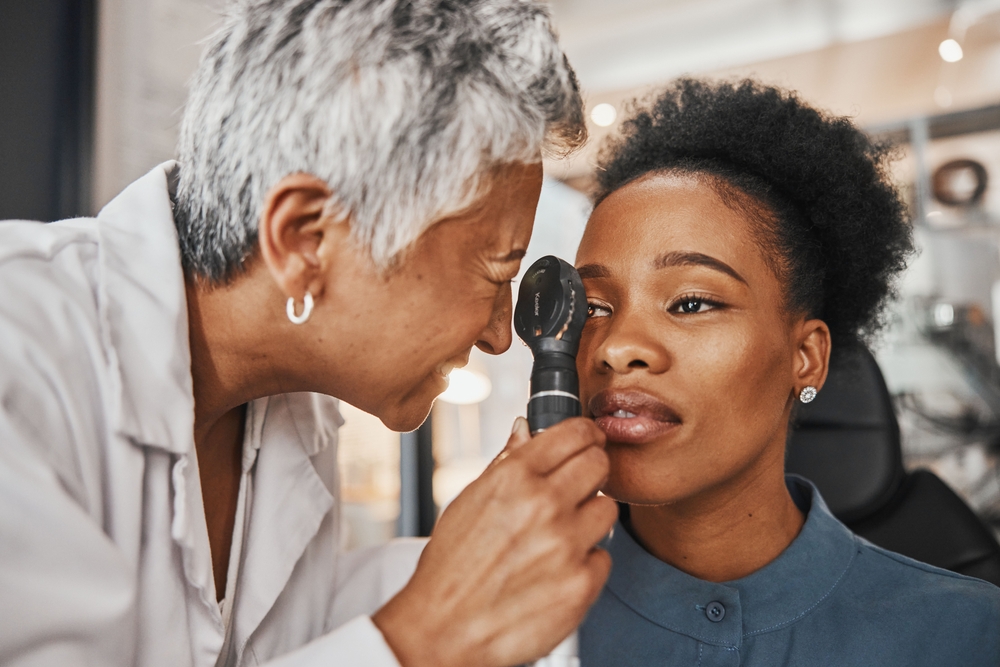When it comes to spotting the early warning signs of diabetes, most people think of blood sugar tests or weight gain. But here’s something you might not know: your eyes can reveal powerful clues about early diabetes risk before you even step into a doctor’s office.
Understanding what your eyes reveal about early diabetes risk can empower you to take control of your health, make informed lifestyle choices and avoid complications down the line. The connection between eye health and blood sugar control offers a unique opportunity for early detection of this serious condition.
Your eyes serve as windows into your overall health because they contain blood vessels, nerves and tissues that doctors can observe directly without invasive procedures. These structures respond quickly to changes in blood sugar levels, often showing damage before other symptoms appear.
Early warning signs in your vision
You may not feel any different, but your eyes could already be showing subtle signs of trouble. Diabetes affects blood vessels, and the small, delicate vessels in your eyes are among the first to react to elevated blood sugar levels.
Key changes to watch for include blurry vision that you might brush off as needing new glasses. Fluctuating blood sugar levels can cause the lens of your eye to swell, making your vision unclear and inconsistent.
Frequent vision changes represent another important warning sign. If you notice your prescription seems to change more often than usual, that could indicate your body is struggling to keep blood sugar stable. The lens of the eye swells and contracts as blood sugar rises and falls, affecting your ability to see clearly.
Difficulty focusing, especially when switching between near and far objects, can signal early diabetes. The eye’s focusing mechanism becomes less efficient when blood sugar levels are unstable, making it harder to maintain clear vision at different distances.
Eye fatigue that persists even after resting could hint at underlying health issues, including developing diabetes. When your body works harder to process elevated blood sugar, it can affect energy levels and eye comfort.
Sudden increases in floaters or dark spots might indicate early damage to the retina, sometimes linked to rising blood sugar levels. While floaters aren’t always dangerous, changes in their frequency or intensity warrant attention.
How eyes reveal internal health
Your eyes have the unique ability to reveal what’s happening inside your body because doctors can directly observe blood vessels, nerves and tissues without invasive procedures. This makes eye examinations particularly valuable for detecting systemic health problems.
During an eye exam, an optometrist or ophthalmologist can detect early signs of diabetes risk by observing retinal blood vessel changes. Tiny blood vessels may narrow, leak or show signs of blockage that indicate poor blood sugar control.
Swelling in the retina, known as diabetic macular edema, can develop even before diabetes is officially diagnosed. This condition affects the central part of the retina responsible for sharp, detailed vision.
Nerve damage in the eye, called diabetic neuropathy, may present as changes in the way the eye responds to light. This can affect pupil function and overall visual processing.
People with diabetes are more prone to developing cataracts at a younger age than those without the condition. Early clouding of the lens can be detected during routine eye examinations, potentially indicating elevated blood sugar levels.
These signs are critical because they often appear before you experience any noticeable symptoms elsewhere in your body. The eyes provide an early warning system that can prompt important health interventions.
The importance of regular eye examinations
Many people underestimate how essential regular eye exams are, even if they feel healthy. Comprehensive eye examinations do more than check your vision — they can help identify diseases like diabetes in their earliest stages.
Your eye doctor may be the first healthcare professional to spot signs of high blood sugar, thanks to sophisticated imaging tools and close observation of retinal structures. Advanced techniques allow detailed examination of blood vessels and tissue changes that indicate developing health problems.
Annual eye exams should be part of everyone’s preventive health routine, especially if you have risk factors such as family history, obesity or high blood pressure. These examinations can detect problems months or even years before symptoms develop elsewhere.
The technology available in modern eye care allows for detailed photography and analysis of retinal structures, creating permanent records that can track changes over time and identify subtle progression of disease.
Protective lifestyle changes
If your eyes are revealing hints of early diabetes risk, the good news is that lifestyle changes can dramatically reduce your chances of developing full-blown diabetes while protecting your vision simultaneously.
Dietary improvements form the foundation of diabetes prevention. Focus on whole, unprocessed foods rich in fiber, lean protein and healthy fats. Limit sugary drinks and refined carbohydrates that cause blood sugar spikes.
Regular exercise significantly impacts blood sugar control and insulin sensitivity. Even moderate activity like brisk walking for 30 minutes daily can improve your body’s ability to process glucose effectively.
Weight management plays a crucial role in diabetes prevention. Losing even a small percentage of body weight — as little as 5 to 10 percent — can significantly reduce diabetes risk and improve overall health outcomes.
Additional protective strategies include:
- Stay hydrated: Drinking adequate water supports metabolism and helps regulate blood sugar levels naturally.
- Quit smoking: Tobacco use damages blood vessels and increases risk for both diabetes and eye diseases significantly.
- Manage stress: Chronic stress elevates blood sugar levels, so practices like mindfulness, meditation or yoga provide important health benefits.
- Monitor blood pressure: High blood pressure often accompanies diabetes risk and can damage the same blood vessels affected by elevated blood sugar.
Working with healthcare providers
If you notice any changes in your vision or if your eye doctor raises concerns, it’s important to speak with your healthcare provider promptly. Early intervention provides the best outcomes for preventing or managing diabetes.
Important topics to discuss include recent vision changes or eye discomfort, family history of diabetes or related conditions, and blood sugar testing options. Your healthcare provider can recommend appropriate screening tests and monitoring strategies based on your individual risk factors.
Preventive strategies should be tailored to your personal situation, taking into account factors like age, family history, current health status and lifestyle. A comprehensive approach addresses all aspects of diabetes risk, not just the symptoms visible in your eyes.
Remember that early intervention is key to preventing complications. Don’t wait until symptoms worsen before seeking professional help, as diabetes-related eye damage can progress quickly once it begins.
The value of early detection
Learning that your eyes might be signaling a chronic condition can feel overwhelming, but knowledge provides power to take control of your health. Instead of fearing the unknown, you can arm yourself with information and seek appropriate professional guidance.
Many people who catch diabetes risk early successfully manage their condition with lifestyle adjustments alone, never progressing to full diabetes. Early detection can prevent vision loss, nerve damage, kidney problems and heart complications.
The emotional impact of early detection should be viewed as an opportunity rather than a burden. You have the chance to prevent a serious chronic condition by making changes now, before irreversible damage occurs.
By staying informed and proactive, you’re investing in long-term health and quality of life. The small inconvenience of regular eye exams and lifestyle modifications pays enormous dividends in preventing serious complications.
What your eyes reveal about early diabetes risk represents more than vision concerns — it’s information about your overall health trajectory. By paying attention to small changes, maintaining consistent eye examinations and working closely with healthcare providers, you can take meaningful steps toward preventing diabetes.
Your eyes offer a unique window into your health status. Listen to the signals they provide, monitor changes carefully and let them guide you toward making choices that support long-term well-being.
When you take charge today, you’re building a future where clear vision, vibrant health and peace of mind work together. Early action based on what your eyes reveal can prevent serious complications and preserve both your sight and your overall health for years to come.

















